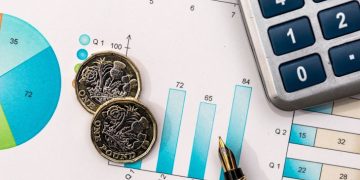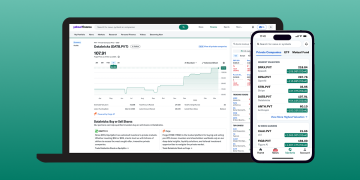The global transition toward sustainable energy is accelerating, driven by growing awareness of climate change, technological advancements, and supportive government policies. Investments in green energy have surged in recent years, reshaping energy markets and fostering innovation across various sectors. This article delves into the rise of green energy investments, their impact on the global economy, and the opportunities and challenges they present for governments, businesses, and consumers.
The Surge in Green Energy Investments
Global Investment Trends
Green energy investments have reached record levels, with renewable energy projects dominating new energy infrastructure development. Solar, wind, hydroelectric, and geothermal power are at the forefront of this transformation. According to recent reports, global spending on renewable energy surpassed $500 billion annually, reflecting a commitment to reducing carbon emissions and diversifying energy sources.
Regional Leaders in Green Energy
- Europe: The European Union has been a trailblazer in adopting renewable energy, with countries like Germany, Denmark, and Spain leading in solar and wind capacity. Initiatives such as the European Green Deal aim to achieve net-zero emissions by 2050.
- Asia: China dominates the global renewable energy market, being the largest producer of solar panels, wind turbines, and batteries. India is also ramping up investments in solar energy as part of its ambitious renewable targets.
- North America: The United States is witnessing significant growth in offshore wind projects, alongside continued investment in solar and battery storage technologies. Canada is also expanding its hydropower infrastructure.
Driving Factors Behind the Growth
Technological Advancements
Advances in technology have significantly reduced the cost of renewable energy. Solar photovoltaic (PV) module prices, for instance, have dropped by over 80% in the past decade. Similarly, improvements in wind turbine efficiency have made wind power more competitive with fossil fuels.
Policy Support
Governments worldwide are implementing policies to encourage green energy adoption. Subsidies, tax credits, and feed-in tariffs have been critical in lowering financial barriers for renewable energy projects. Additionally, international agreements like the Paris Accord have spurred nations to commit to reducing greenhouse gas emissions.
Corporate and Investor Interest
Corporations and institutional investors are increasingly prioritizing Environmental, Social, and Governance (ESG) criteria. Companies are adopting renewable energy to meet sustainability goals, while green bonds and climate funds are channeling capital into clean energy projects.
Economic Impacts of Green Energy Investments
Job Creation
The renewable energy sector is a major source of job creation. According to the International Renewable Energy Agency (IRENA), the sector employed over 12 million people globally in 2023, with solar PV leading employment growth. This trend highlights the potential of green energy to drive economic development.
Energy Independence
Investing in renewable energy reduces reliance on imported fossil fuels, enhancing energy security for nations. Countries can harness domestic renewable resources, decreasing vulnerability to global energy market fluctuations.
Market Dynamics
Green energy investments are disrupting traditional energy markets. Fossil fuel-based power plants face increasing competition from renewables, leading to a shift in capital allocation and investment strategies. This transition is fostering innovation and competition within the energy sector.
Opportunities for Stakeholders
Governments
Governments can leverage green energy investments to achieve sustainable development goals. By creating favorable policies and regulatory frameworks, they can attract private investments, stimulate local economies, and meet international climate commitments.
Businesses
Businesses are finding opportunities in manufacturing, installing, and maintaining renewable energy systems. The rise of decentralized energy solutions, such as rooftop solar panels and microgrids, is creating new markets for small and medium enterprises.
Consumers
Consumers benefit from green energy through lower energy costs and improved access to electricity. In rural areas, off-grid renewable solutions are providing reliable power, transforming lives and boosting productivity.

Challenges in Scaling Green Energy
Infrastructure and Storage
The intermittent nature of renewable energy sources like solar and wind necessitates investments in energy storage and grid infrastructure. Battery technologies and smart grid systems are critical for ensuring a stable energy supply.
Financing Gaps
While investment in green energy is growing, significant financing gaps remain, particularly in developing countries. Mobilizing capital for large-scale projects requires innovative financial instruments and public-private partnerships.
Regulatory Barriers
Inconsistent regulations and lack of policy coordination can hinder the deployment of renewable energy projects. Streamlining permitting processes and establishing clear guidelines are essential for accelerating growth.
Environmental and Social Impacts
Despite their benefits, renewable energy projects can have environmental and social impacts. Land use conflicts, habitat disruption, and community displacement are challenges that must be addressed through inclusive and sustainable project planning.
Innovations Shaping the Future of Green Energy
Advanced Energy Storage
Innovations in battery technology, such as solid-state batteries and flow batteries, are enhancing energy storage capabilities. These advancements are critical for integrating renewable energy into the grid and ensuring round-the-clock power availability.
Green Hydrogen
Green hydrogen, produced using renewable energy, is emerging as a versatile energy carrier. It has the potential to decarbonize industries such as steel, cement, and aviation, where direct electrification is challenging.
Floating Solar Farms
Floating solar farms, deployed on reservoirs and water bodies, are gaining traction as an innovative solution to land scarcity. These installations also reduce water evaporation and improve solar panel efficiency.
Digitalization
The use of artificial intelligence (AI) and Internet of Things (IoT) technologies in energy management is revolutionizing the sector. Smart grids and predictive analytics optimize energy production, distribution, and consumption.
The Road Ahead
Global Collaboration
Achieving a sustainable energy future requires global collaboration. International partnerships can accelerate technology transfer, share best practices, and mobilize resources for green energy development.
Policy Evolution
Governments must continually adapt policies to address emerging challenges and capitalize on new opportunities. Aligning national energy plans with global sustainability goals will be key to long-term success.
Private Sector Involvement
The private sector’s role in driving green energy investments will continue to grow. Companies must prioritize sustainability in their business models and innovate to stay competitive in an evolving energy landscape.
Education and Awareness
Raising awareness about the benefits of renewable energy is crucial for fostering public support. Education campaigns can empower individuals and communities to adopt sustainable energy practices.
Conclusion
The rise of green energy investments represents a pivotal moment in the fight against climate change and the quest for sustainable development. By embracing innovation, fostering collaboration, and addressing challenges, the world can transition to a greener, more resilient energy future. Green energy not only holds the promise of a cleaner planet but also unlocks economic opportunities and improves the quality of life for millions. As the momentum builds, stakeholders across the globe must unite to harness the full potential of this transformative movement.






























